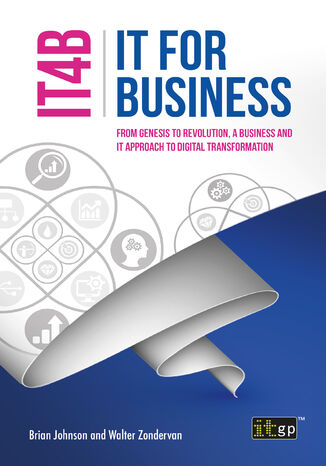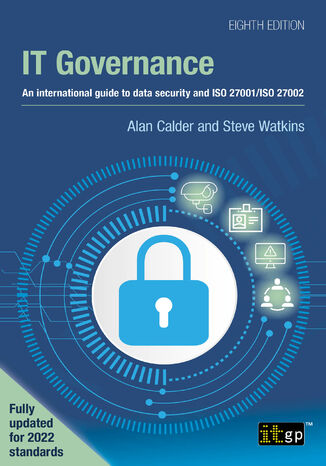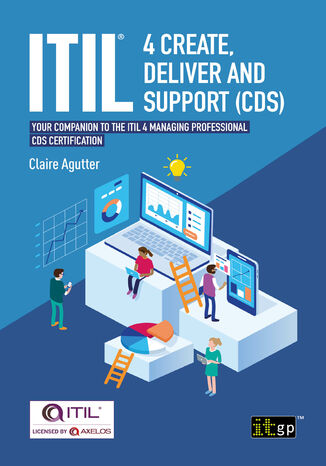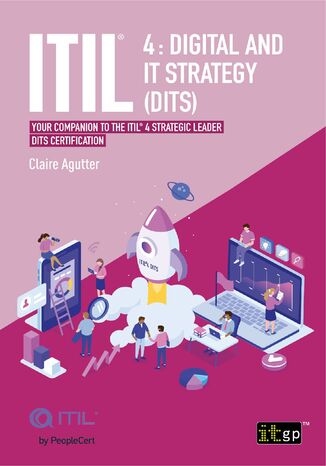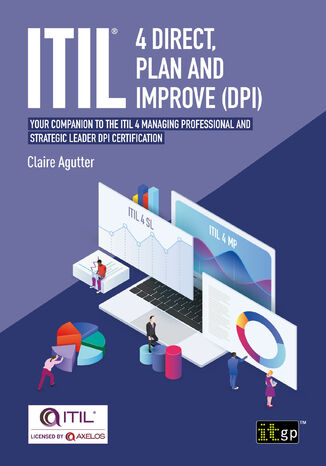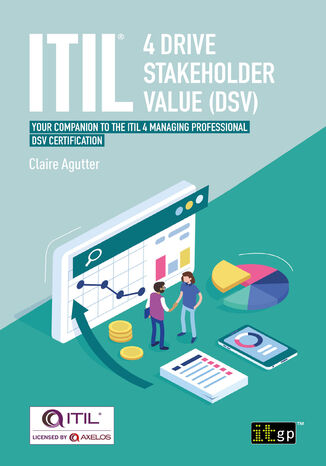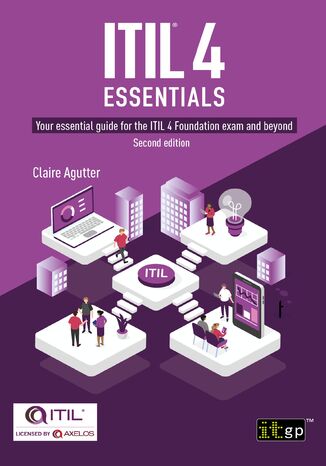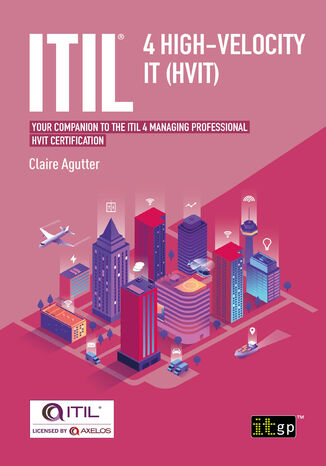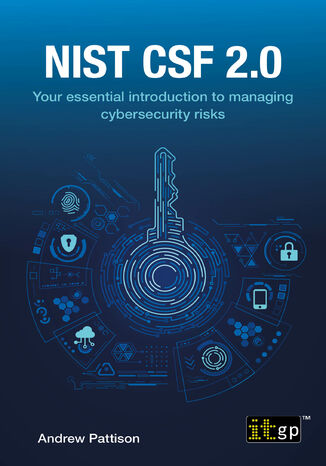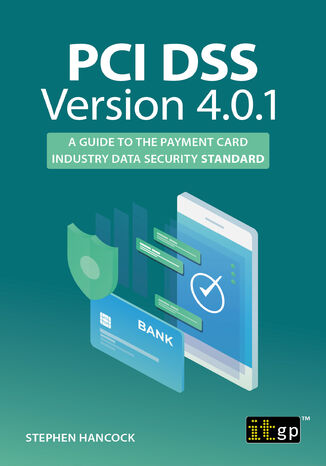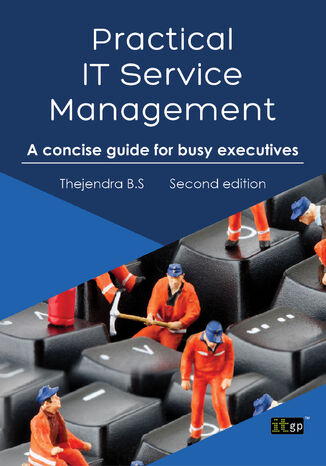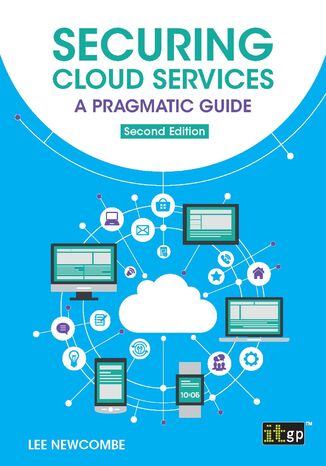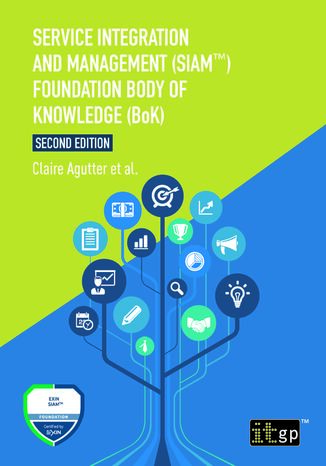Kategorien
E-Books
-
Wirtschaft
- Bitcoin
- Geschäftsfrau
- Coaching
- Controlling
- E-Business
- Ökonomie
- Finanzen
- Börse und Investitionen
- Persönliche Kompetenzen
- Computer im Büro
- Kommunikation und Verhandlungen
- Kleines Unternehmen
- Marketing
- Motivation
- Multimedia-Training
- Immobilien
- Überzeugung und NLP
- Steuern
- Sozialpolitik
- Handbȕcher
- Präsentationen
- Führung
- Public Relation
- Berichte, Analysen
- Geheimnis
- Social Media
- Verkauf
- Start-up
- Ihre Karriere
- Management
- Projektmanagement
- Personal (HR)
-
Für Kinder
-
Für Jugendliche
-
Bildung
-
Enzyklopädien, Wörterbücher
-
E-Presse
- Architektura i wnętrza
- Sicherheit und Gesundheit am Arbeitsplatz
- Biznes i Ekonomia
- Haus und Garten
- E-Business
- Ekonomia i finanse
- Esoterik
- Finanzen
- Persönliche Finanzen
- Unternehmen
- Fotografie
- Informatik
- HR und Gehaltsabrechnung
- Frauen
- Computer, Excel
- Buchhaltung
- Kultur und Literatur
- Wissenschaftlich und akademisch
- Umweltschutz
- meinungsbildend
- Bildung
- Steuern
- Reisen
- Psychologie
- Religion
- Landwirtschaft
- Buch- und Pressemarkt
- Transport und Spedition
- Gesundheit und Schönheit
-
Geschichte
-
Informatik
- Office-Programme
- Datenbank
- Bioinformatik
- IT Branche
- CAD/CAM
- Digital Lifestyle
- DTP
- Elektronik
- Digitale Fotografie
- Computergrafik
- Spiele
- Hacking
- Hardware
- IT w ekonomii
- Wissenschaftliche Pakete
- Schulbücher
- Computergrundlagen
- Programmierung
- Mobile-Programmierung
- Internet-Server
- Computernetzwerke
- Start-up
- Betriebssysteme
- Künstliche Inteligenz
- Technik für Kinder
- Webmaster
-
Andere
-
Fremdsprachen lernen
-
Kultur und Kunst
-
Lektüre
-
Literatur
- Anthologien
- Ballade
- Biografien und Autobiografien
- Für Erwachsene
- Drama
- Tagebücher, Memoiren, Briefe
- Epos
- Essay
- Science Fiction
- Felietonys
- Fiktion
- Humor, Satire
- Andere
- Klassisch
- Krimi
- Sachbücher
- Belletristik
- Mity i legendy
- Nobelpreisträger
- Kurzgeschichten
- Gesellschaftlich
- Okultyzm i magia
- Erzählung
- Erinnerungen
- Reisen
- Gedicht
- Poesie
- Politik
- Populärwissenschaftlich
- Roman
- Historischer Roman
- Prosa
- Abenteuer
- Journalismus
- Reportage
- Romans i literatura obyczajowa
- Sensation
- Thriller, Horror
- Interviews und Erinnerungen
-
Naturwissenschaften
-
Sozialwissenschaften
-
Schulbücher
-
Populärwissenschaft und akademisch
- Archäologie
- Bibliotekoznawstwo
- Filmwissenschaft
- Philologie
- Polnische Philologie
- Philosophie
- Finanse i bankowość
- Erdkunde
- Wirtschaft
- Handel. Weltwirtschaft
- Geschichte und Archäologie
- Kunst- und Architekturgeschichte
- Kulturwissenschaft
- Linguistik
- Literaturwissenschaft
- Logistik
- Mathematik
- Medizin
- Geisteswissenschaften
- Pädagogik
- Lehrmittel
- Populärwissenschaftlich
- Andere
- Psychologie
- Soziologie
- Theatrologie
- Teologie
- Theorien und Wirtschaftswissenschaften
- Transport i spedycja
- Sportunterricht
- Zarządzanie i marketing
-
Handbȕcher
-
Spielanleitungen
-
Professioneller und fachkundige Leitfaden
-
Jura
- Sicherheit und Gesundheit am Arbeitsplatz
- Geschichte
- Verkehrsregeln. Führerschein
- Rechtswissenschaften
- Gesundheitswesen
- Allgemeines. Wissenskompendium
- akademische Bücher
- Andere
- Bau- und Wohnungsrecht
- Zivilrecht
- Finanzrecht
- Wirtschaftsrecht
- Wirtschafts- und Handelsrecht
- Strafrecht
- Strafrecht. Kriminelle Taten. Kriminologie
- Internationales Recht
- Internationales und ausländisches Recht
- Gesundheitsschutzgesetz
- Bildungsrecht
- Steuerrecht
- Arbeits- und Sozialversicherungsrecht
- Öffentliches, Verfassungs- und Verwaltungsrecht
- Familien- und Vormundschaftsrecht
- Agrarrecht
- Sozialrecht, Arbeitsrecht
- EU-Recht
- Industrie
- Agrar- und Umweltschutz
- Wörterbücher und Enzyklopädien
- Öffentliche Auftragsvergabe
- Management
-
Führer und Reisen
- Afrika
- Alben
- Südamerika
- Mittel- und Nordamerika
- Australien, Neuseeland, Ozeanien
- Österreich
- Asien
- Balkan
- Naher Osten
- Bulgarien
- China
- Kroatien
- Tschechische Republik
- Dänemark
- Ägypten
- Estland
- Europa
- Frankreich
- Berge
- Griechenland
- Spanien
- Niederlande
- Island
- Litauen
- Lettland
- Mapy, Plany miast, Atlasy
- Miniführer
- Deutschland
- Norwegen
- Aktive Reisen
- Polen
- Portugal
- Andere
- Przewodniki po hotelach i restauracjach
- Russland
- Rumänien
- Slowakei
- Slowenien
- Schweiz
- Schweden
- Welt
- Türkei
- Ukraine
- Ungarn
- Großbritannien
- Italien
-
Psychologie
- Lebensphilosophien
- Kompetencje psychospołeczne
- zwischenmenschliche Kommunikation
- Mindfulness
- Allgemeines
- Überzeugung und NLP
- Akademische Psychologie
- Psychologie von Seele und Geist
- Arbeitspsychologie
- Relacje i związki
- Elternschafts- und Kinderpsychologie
- Problemlösung
- Intellektuelle Entwicklung
- Geheimnis
- Sexualität
- Verführung
- Aussehen ind Image
- Lebensphilosophien
-
Religion
-
Sport, Fitness, Diäten
-
Technik und Mechanik
Hörbücher
-
Wirtschaft
- Bitcoin
- Geschäftsfrau
- Coaching
- Controlling
- E-Business
- Ökonomie
- Finanzen
- Börse und Investitionen
- Persönliche Kompetenzen
- Kommunikation und Verhandlungen
- Kleines Unternehmen
- Marketing
- Motivation
- Immobilien
- Überzeugung und NLP
- Steuern
- Sozialpolitik
- Handbȕcher
- Präsentationen
- Führung
- Public Relation
- Geheimnis
- Social Media
- Verkauf
- Start-up
- Ihre Karriere
- Management
- Projektmanagement
- Personal (HR)
-
Für Kinder
-
Für Jugendliche
-
Bildung
-
Enzyklopädien, Wörterbücher
-
E-Presse
-
Geschichte
-
Informatik
-
Andere
-
Fremdsprachen lernen
-
Kultur und Kunst
-
Lektüre
-
Literatur
- Anthologien
- Ballade
- Biografien und Autobiografien
- Für Erwachsene
- Drama
- Tagebücher, Memoiren, Briefe
- Epos
- Essay
- Science Fiction
- Felietonys
- Fiktion
- Humor, Satire
- Andere
- Klassisch
- Krimi
- Sachbücher
- Belletristik
- Mity i legendy
- Nobelpreisträger
- Kurzgeschichten
- Gesellschaftlich
- Okultyzm i magia
- Erzählung
- Erinnerungen
- Reisen
- Poesie
- Politik
- Populärwissenschaftlich
- Roman
- Historischer Roman
- Prosa
- Abenteuer
- Journalismus
- Reportage
- Romans i literatura obyczajowa
- Sensation
- Thriller, Horror
- Interviews und Erinnerungen
-
Naturwissenschaften
-
Sozialwissenschaften
-
Populärwissenschaft und akademisch
- Archäologie
- Philosophie
- Wirtschaft
- Handel. Weltwirtschaft
- Geschichte und Archäologie
- Kunst- und Architekturgeschichte
- Kulturwissenschaft
- Literaturwissenschaft
- Mathematik
- Medizin
- Geisteswissenschaften
- Pädagogik
- Lehrmittel
- Populärwissenschaftlich
- Andere
- Psychologie
- Soziologie
- Teologie
- Zarządzanie i marketing
-
Handbȕcher
-
Professioneller und fachkundige Leitfaden
-
Jura
-
Führer und Reisen
-
Psychologie
- Lebensphilosophien
- zwischenmenschliche Kommunikation
- Mindfulness
- Allgemeines
- Überzeugung und NLP
- Akademische Psychologie
- Psychologie von Seele und Geist
- Arbeitspsychologie
- Relacje i związki
- Elternschafts- und Kinderpsychologie
- Problemlösung
- Intellektuelle Entwicklung
- Geheimnis
- Sexualität
- Verführung
- Aussehen ind Image
- Lebensphilosophien
-
Religion
-
Sport, Fitness, Diäten
-
Technik und Mechanik
Videokurse
-
Datenbank
-
Big Data
-
Biznes, ekonomia i marketing
-
Cybersicherheit
-
Data Science
-
DevOps
-
Für Kinder
-
Elektronik
-
Grafik / Video / CAX
-
Spiele
-
Microsoft Office
-
Entwicklungstools
-
Programmierung
-
Persönliche Entwicklung
-
Computernetzwerke
-
Betriebssysteme
-
Softwaretest
-
Mobile Geräte
-
UX/UI
-
Web development
-
Management
Podcasts
ISO 50001. A strategic guide to establishing an energy management system
IT Governance Publishing, Alan Field
This guide introduces readers to the essential concepts of an Energy Management System (EnMS), with a focus on the internationally recognized ISO 50001 standard. It explains why energy management is a strategic priority, the benefits of adopting an EnMS, and how ISO 50001 plays a pivotal role in reducing energy consumption while enhancing environmental sustainability.The book covers the essential aspects of ISO 50001, from its key definitions and principles to the PDCA (Plan-Do-Check-Act) cycle that underpins its effectiveness. It also provides practical insights on integrating ISO 50001 with ISO 14001, creating a comprehensive management system that aligns with both energy and environmental objectives. Readers will learn about the key differences between the 2011 and 2018 versions of ISO 50001 and how to successfully prepare for third-party assessments to achieve certification.Perfect for energy managers, sustainability professionals, and organizations aiming to improve their energy efficiency, this book offers a detailed roadmap for implementing ISO 50001 and achieving long-term energy savings. It also highlights the strategic advantages of integrating energy management with broader sustainability goals and environmental management practices.
IT Governance Publishing, Brian Johnson, Walter Zondervan
This book delves into the evolving role of IT in business transformation, covering key strategies for aligning business objectives with digital tools and technologies. It focuses on the importance of governance, efficiency, and risk management in driving IT success. Readers will discover how to build effective IT strategies, manage service delivery, and improve stakeholder engagement in a rapidly changing digital landscape. With practical frameworks and real-world case studies, it provides a roadmap for managing the complexities of digital service design, contract management, and performance. As the book progresses, it highlights the challenges and opportunities IT presents, from governance issues to innovation drivers. It concludes with actionable insights into digital readiness and transformation, equipping readers with the tools to navigate and lead in the digital age.
IT Governance. An international guide to data security and ISO 27001/ISO 27002
IT Governance Publishing, Alan Calder, Steve G Watkins
In the modern digital landscape, information security has never been more critical. This book introduces readers to the essential components of IT governance, focusing on frameworks like ISO 27001 and strategies for managing risks in today's complex information economy. The content explores key topics like cybersecurity, risk management, information security policies, and compliance with international standards. As you progress, you’ll learn to navigate the challenges of organizing and maintaining a secure IT environment, with insights into compliance regulations, security frameworks, and governance codes. The book provides hands-on guidance on applying security controls, setting up robust information security policies, and evaluating risks. Real-world scenarios and practical applications ensure the knowledge gained is immediately applicable to professional environments.The journey culminates in an understanding of how to integrate IT governance within an organization. You’ll learn to assess vulnerabilities, implement risk management strategies, and ensure that security measures align with both business goals and regulatory requirements. The book equips readers with the tools needed to strengthen IT systems against evolving threats and to stay ahead in the information security landscape.
IT Governance Publishing, Claire Agutter
This book offers a thorough guide to ITIL® 4’s Create, Deliver, and Support (CDS) module, covering key concepts and practices for IT service management. It begins with foundational aspects of the service value system (SVS), highlighting organizational structures, roles, and collaborative cultures essential for successful service delivery. The early chapters focus on adopting a shift-left approach to resource management, helping teams prioritize efficiency and proactive problem-solving.As the book progresses, it explores the strategic planning and management of resources within the SVS, stressing the importance of continual improvement and leveraging technology to optimize service management. It also provides insight into managing value streams for new services, guiding readers on how to create, manage, and measure service value chains for improved service delivery and innovation.The later chapters address specific ITIL® practices, such as service design, incident management, problem management, and knowledge management. The book concludes with exam preparation for ITIL® 4 CDS, offering practical case studies and real-world scenarios.By the end, readers will be equipped to enhance service management processes and ensure the delivery of high-quality IT services aligned with business objectives.
IT Governance Publishing, Claire Agutter
This book explores ITIL® 4’s approach to digital strategy, starting with key concepts like digital transformation, ITIL® 4 guiding principles, and the role of technology in shaping business models. It introduces the driving forces behind change and how to align digital strategies with business goals for maximum impact.The middle chapters delve into the practical aspects of IT strategy, focusing on areas such as strategy management, governance, and continual improvement. Key topics like digital disruption, organizational viability, and strategic approaches for operational excellence are covered in-depth. The book provides a structured framework for managing risks, handling financial strategies, and fostering innovation in digital organizations.The final chapters guide readers on implementing and assessing digital strategies, from defining clear goals to establishing operational models. Practical tools, case studies, and exam preparation further enhance the reader's understanding. Ideal for IT professionals, business leaders, and strategists, this book equips them with the skills and knowledge to lead digital transformation and succeed in the modern business environment.
IT Governance Publishing, Claire Agutter
This book offers a comprehensive exploration of ITIL® 4 Direct, Plan and Improve (DPI), beginning with key concepts of governance, risk management, continual improvement, and organizational change management. It introduces the essentials of direction, planning, and improvement, guiding readers in aligning strategic goals with actionable steps. The core methods, risks, and controls crucial for effective DPI practices are explored.As you progress, the book delves into governance, risk, and compliance, emphasizing how to align objectives and establish clear decision-making frameworks. You'll learn to craft policies and controls, ensuring a robust and adaptable service management strategy. A strong focus on continual improvement equips you with practical strategies for assessing and enhancing service quality.The book also covers organizational change management (OCM), providing techniques to manage emotional and social aspects of change while aligning with business goals. You’ll gain strategies for stakeholder communication, feedback mechanisms, and values-based change management. Finally, the book discusses measurement, reporting, and optimization, showing how to map value streams, optimize workflows, and measure performance. By the end, you’ll be ready to lead DPI initiatives and drive transformation within your organization.
IT Governance Publishing, Claire Agutter
The book explores the essential practices and strategies for driving stakeholder value, focusing on the ITIL® 4 framework. It begins with an in-depth analysis of the customer journey, including how to design and improve value streams, ensuring customer satisfaction and service quality. The book moves into targeting markets and stakeholders, offering methods for market segmentation and defining strategies for better customer engagement.In subsequent chapters, the book delves into building strong relationships with both suppliers and customers, a cornerstone of service management success. The exploration of service offerings and demand management provides actionable insights into shaping and delivering services that meet customer needs and expectations. The process of aligning expectations through value co-creation and service agreements also becomes a focus, preparing readers to manage all stages of the service lifecycle effectively.With detailed discussions on onboarding and offboarding, continual value co-creation, and service value measurement, the book provides a holistic approach to creating sustainable value for all stakeholders. This text is invaluable for professionals seeking to understand and apply ITIL® 4’s principles in real-world scenarios.
ITIL(R) 4 Essentials. Your essential guide for the ITIL® 4 Foundation exam and beyond
IT Governance Publishing, Claire Agutter
The ITIL® 4 Essentials guide offers a comprehensive introduction to IT service management, focusing on ITIL® 4 practices and principles. Readers gain an understanding of the four dimensions of service management—organizations, people, information, technology, partners, and suppliers—which are key to delivering effective IT services.The guide highlights ITIL® 4’s seven guiding principles, such as focusing on value, collaborating, and working holistically. These principles are essential for creating effective service management strategies. Readers will learn how to integrate these principles into their daily operations, leading to enhanced service delivery and better alignment with business goals. Additionally, the book explores the importance of the Service Value System (SVS) and the Service Value Chain, offering a detailed look at how these frameworks drive continuous improvement and value creation.Lastly, the book covers essential ITIL® 4 practices like continual improvement, change management, and incident management. Each practice is explored in depth, providing practical guidance for implementation. The final chapters offer exam preparation tips, ensuring readers are ready for the ITIL® Foundation exam, with sample questions and strategies for success.
IT Governance Publishing, Claire Agutter
This book guides readers through the core principles and practices of High-Velocity IT, offering a comprehensive approach to modern IT service management. It begins with foundational concepts, introducing High-Velocity IT and the essential behaviors needed for success in dynamic environments. Readers are then introduced to the digital product lifecycle and the ITIL® operating model, which emphasize the importance of service value systems and value streams in driving business outcomes.The book delves into key behaviors that support continuous improvement, including adaptability, trust, and commitment to learning. It also covers various principles and models, such as Lean, Agile, and Design Thinking, offering practical techniques to enhance IT performance.In the later chapters, the focus shifts to ensuring valuable investments, fast development, resilient operations, and co-created value. It presents techniques for achieving these objectives while aligning with ITIL® 4 practices. The final chapter prepares readers for the HVIT certification exam, consolidating key learnings and providing a solid foundation for future success in High-Velocity IT environments. This book offers both theory and practical guidance for those seeking to thrive in fast-paced, value-driven IT operations.
ITIL(R) Foundation Essentials ITIL(R) 4 Edition. The ultimate revision guide
IT Governance Publishing, Claire Agutter
This book offers a detailed introduction to IT service management and the ITIL® 4 framework by covering key concepts such as value, service management, and co-creation, providing a solid foundation for understanding ITIL®. Readers are introduced to the four dimensions of service management and how they apply to organizational success. The book also explores the various roles involved in service management, from service providers to consumers, and the essential relationships that drive value.The book further explains ITIL®’s guiding principles, such as focusing on value, thinking and working holistically, and simplifying processes. These principles form the core of ITIL® 4’s approach, emphasizing flexibility, iterative progress, and stakeholder collaboration. With practical examples and clear explanations, readers will learn how to integrate these principles into their service management practices.Lastly, the book dives deep into the Service Value System and Service Value Chain, detailing how each component contributes to delivering business value. It also explores essential ITIL® practices, such as continual improvement and incident management. The final sections provide valuable exam preparation tips to ensure readers are well-equipped to pass the ITIL® Foundation exam with confidence.
NIST CSF 2.0. Your essential introduction to managing cybersecurity risks
IT Governance Publishing, Andrew Pattison
This comprehensive guide introduces the origins, aims, and components of the NIST Cybersecurity Framework (CSF) 2.0. It explores the core structure including functions, categories, subcategories, and profiles, and provides detailed implementation tiers and examples.Readers are then guided through a deep dive into all six framework categories—from Govern to Recover—and learn how to develop and apply risk management strategies within an organization. The content covers NIST SP 800-53, informative references, and practical quick-start guides to help translate theory into action.The final sections offer a seven-step implementation roadmap, including gap analysis, target profiles, and continuous improvement. The book concludes by mapping the CSF to international standards like ISO 27001 and ISO 22301, offering a well-rounded and interoperable cybersecurity strategy.
PCI DSS Version 4.0.1. A guide to the payment card industry data security standard
IT Governance Publishing, Stephen Hancock
This book provides an essential resource for anyone involved in managing or ensuring PCI DSS compliance. It begins by introducing the Payment Card Industry Data Security Standard (PCI DSS), explaining its importance, and the regulatory framework that governs it. Readers will understand how to assess their organization’s compliance status and the vital steps to avoid data breaches. The book offers a comprehensive exploration of compliance programs and how organizations can design their own effective strategies.The text then dives into the specifics of PCI DSS, focusing on its core components and requirements. Key chapters describe how to comply with and maintain compliance, as well as how to use tools like the PCI self-assessment questionnaire (SAQ). Real-world case studies of cardholder data breaches highlight the consequences of non-compliance. Readers will also learn about the integration of PCI DSS with other standards like ISO/IEC 27001.Throughout, this guide emphasizes practical advice for implementing key security frameworks such as the Software Security Framework (SSF) and Point-to-Point Encryption (P2PE). By the end of the book, readers will have a clear roadmap to not only meet but sustain PCI DSS compliance and strengthen their organization's data security practices.
Practical IT Service Management. A concise guide for busy executives
IT Governance Publishing, Thejendra B.S
This book provides a detailed guide to IT service management (ITSM), centered around the ITIL framework to enhance IT service delivery. It starts by introducing foundational concepts such as IT services, common challenges in IT departments, and the evolution of ITIL, particularly the 2011 edition. The early chapters cover core topics like service strategy, design, and the ITIL lifecycle, offering a strong foundation for understanding how ITIL aligns with business objectives.As the book progresses, it delves into key ITIL processes such as service desk management, incident management, problem management, change and release management, and service asset management. Each chapter explains the roles, responsibilities, and best practices for each process, providing actionable advice and real-world examples for effective application. These sections focus on improving service efficiency and handling IT challenges.The final chapters address advanced topics like service level management, financial management, supplier management, and service continuity. These insights help readers manage resources, build vendor relationships, and ensure business continuity. By the end, readers will be equipped to apply ITIL to optimize IT operations, align them with business needs, and drive continuous improvement.
IT Governance Publishing, Lee Newcombe
Cloud computing plays a critical role in modern business, but with it comes a host of security challenges. This book explores the intricacies of securing cloud services, starting with foundational concepts of cloud computing and moving into specific service and deployment models. It provides insights into balancing security benefits with potential risks such as availability issues, shadow IT, and information leakage. The book goes on to focus on security threats, from hackers and insiders to government entities, while offering strategies to mitigate these risks. The practical approach continues with a deep dive into security architecture, providing a structured model to secure cloud environments across IaaS, PaaS, SaaS, and more. Further, it examines the regulatory landscape, including compliance requirements, privacy concerns, and data protection laws that impact cloud service security. Finally, the book concludes with projections about the future of cloud security and emerging challenges. Readers will gain not only the theoretical foundations but also real-world insights that they can apply to strengthen their cloud service security.
IT Governance Publishing, Claire Agutter
This book offers a detailed exploration of Service Integration and Management (SIAM™), providing insights into its frameworks, structures, and practical applications. It starts by covering the core principles of SIAM™, from its historical context to its role in optimizing service integration across multiple providers. The book then dives into the SIAM roadmap, outlining key stages such as discovery, strategy, planning, and execution, all essential for successful service management.Readers will gain an understanding of different SIAM structures, including externally sourced, internally sourced, and hybrid models, along with their respective advantages and challenges. It also explores how SIAM aligns with other service management practices like ITIL, COBIT, Lean, and Agile, offering a comprehensive approach to managing complex service ecosystems.The book places special emphasis on the roles and responsibilities within a SIAM ecosystem, including those of service providers, integrators, and customers. It also highlights the importance of cultural change, collaboration, and governance for effective SIAM implementation.Finally, readers will learn to identify and address common challenges and risks, equipping them with strategies to overcome obstacles and ensure smooth integration within their organization.
IT Governance Publishing, Claire Agutter
This book outlines a structured progression for implementing Service Integration and Management (SIAM) within complex, multi-vendor environments. It begins by defining SIAM principles, roles, layers, and structural models to establish a shared understanding of its purpose and scope.The roadmap then unfolds in four key stages. The Discovery & Strategy phase focuses on analyzing the current state, setting strategic drivers, and establishing governance foundations. In Plan & Build, the book guides readers through designing the SIAM model, sourcing structures, contracts, and process frameworks. The Implement stage addresses onboarding, transition planning, and applying change management across stakeholder groups. Finally, Run & Improve centers on operating the governance model, managing performance, conducting audits, and enabling continuous service development.Each chapter links practical methods with decision-making considerations, offering a reference for teams planning, launching, or refining a SIAM approach. The content is organized to support structured adoption while allowing flexibility for varied organizational contexts.


